When it comes to versatile and aromatic herbs that elevate any dish, thyme stands tall as a kitchen favorite across America. From Thanksgiving turkeys to everyday soups and stews, this fragrant herb adds layers of earthy, lemony flavor that make meals unforgettable. Beyond its culinary charm, thyme is also celebrated for its hardy nature, health benefits, and ease of growing—making it a must-have for both home gardeners and home cooks.
Whether you’re cultivating thyme in your backyard, seasoning roasted vegetables, or crafting herbal remedies, this classic Mediterranean herb brings flavor and wellness to your table. Let’s dive into everything you need to know about thyme—its varieties, growing tips, harvesting methods, and creative ways to use it in your kitchen.
1. A Brief History and Overview of Thyme
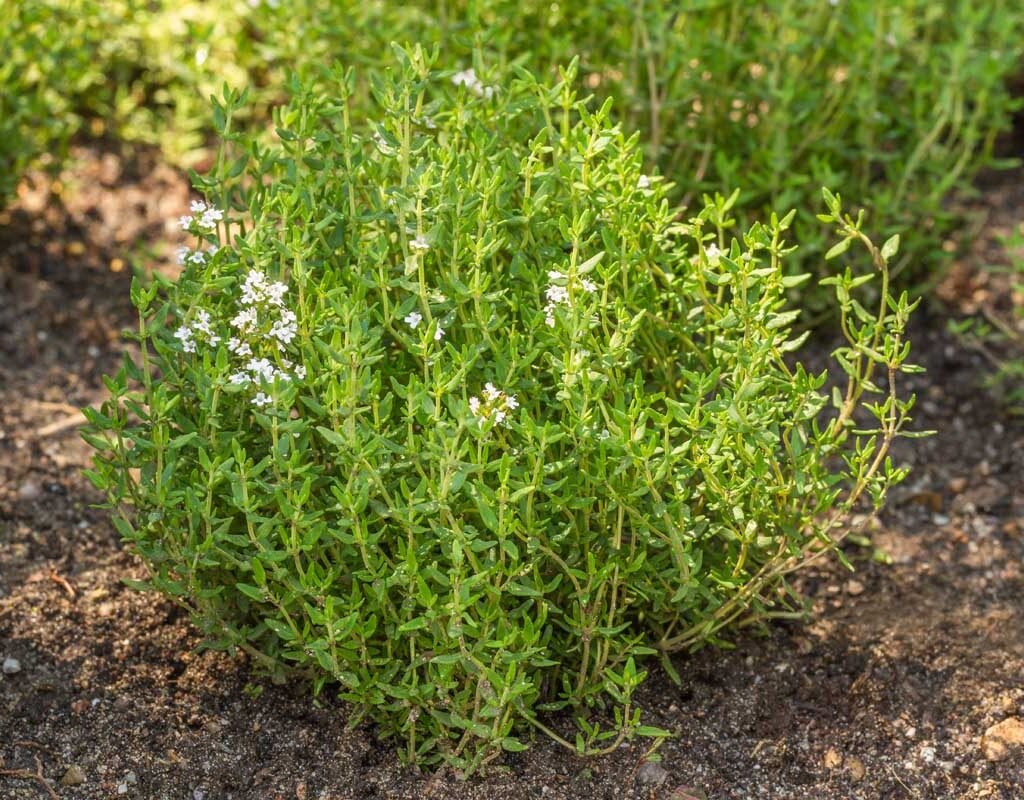
Thyme (Thymus vulgaris) is a perennial herb native to the Mediterranean region but widely grown across the United States due to its adaptability. Ancient Egyptians used thyme in embalming, while the Greeks burned it in temples for purification. In medieval Europe, thyme symbolized courage and was even placed under pillows to ward off nightmares.
Today, thyme is loved for its distinct aroma and powerful flavor, often described as a mix of mint, lemon, and pine. This small-leaved herb belongs to the mint family (Lamiaceae), thriving in sunny, dry environments—making it ideal for many American gardens.
2. Popular Varieties of Thyme in the U.S.
There are over 100 species of thyme, but only a few are commonly cultivated for cooking and ornamental purposes. Here are the top varieties popular among American gardeners:
- Common Thyme (Thymus vulgaris):
The classic culinary variety used in soups, roasts, and sauces. It has a sharp, slightly spicy flavor. - Lemon Thyme (Thymus citriodorus):
Offers a refreshing citrus aroma, perfect for fish, chicken, and salad dressings. - Creeping Thyme (Thymus serpyllum):
A ground-cover variety often used in landscaping and ornamental gardens. It’s also edible but has a milder flavor. - Caraway Thyme:
Known for its warm, caraway-like aroma—great for meat dishes and herbal teas.
Choosing the right type depends on your culinary preferences and gardening goals, but all varieties are drought-tolerant and easy to care for.
3. How to Grow Thyme in Your Garden
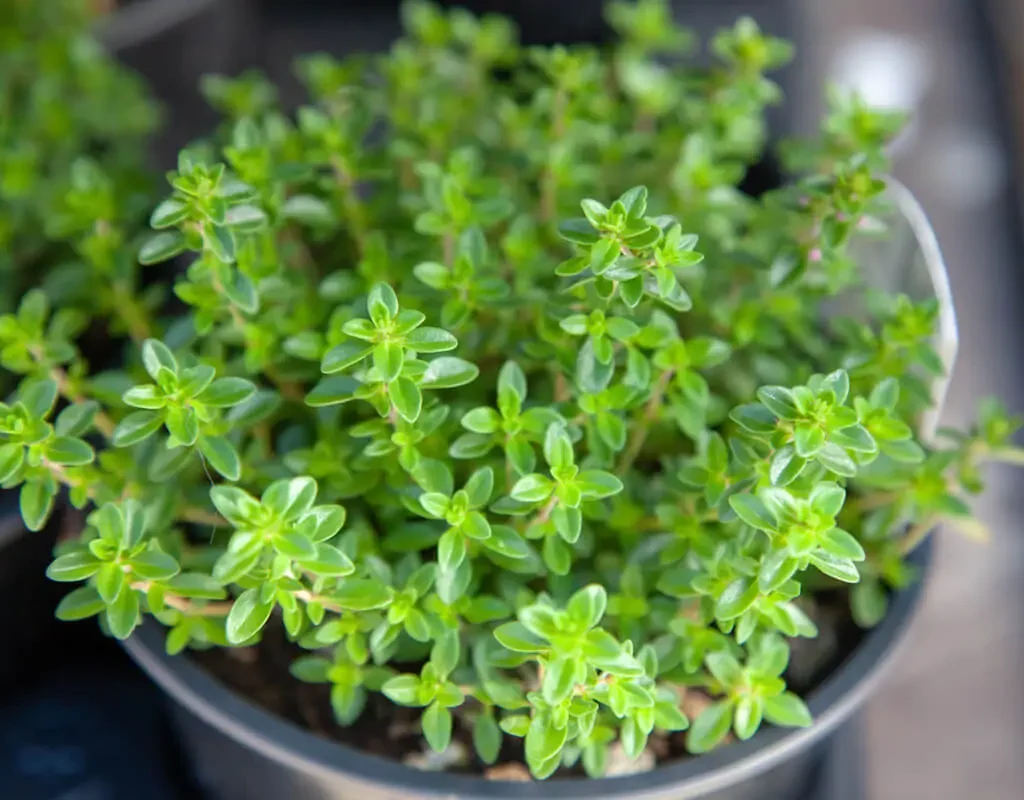
Thyme is a favorite for American home gardeners because it’s low-maintenance and thrives in various climates. Here’s how to grow it successfully:
Soil and Sunlight
- Thyme loves full sun—at least 6 to 8 hours daily.
- It prefers well-draining, slightly alkaline soil (pH 6.0–8.0).
- Avoid heavy clay; sandy or loamy soil works best.
Planting Thyme
- You can start thyme from seeds, cuttings, or nursery plants.
- If planting seeds, sow them indoors 6–8 weeks before the last frost.
- Transplant seedlings outdoors once the soil warms up.
- Space plants about 12–18 inches apart to allow airflow and prevent disease.
Watering and Care
- Water thyme sparingly; it’s drought-tolerant once established.
- Overwatering can lead to root rot.
- Prune regularly to encourage bushy growth and prevent woody stems.
Companion Planting
Thyme pairs well with rosemary, sage, cabbage, and tomatoes. It also helps deter pests like cabbage worms and aphids—making it a smart companion in organic gardens.
4. Harvesting and Storing Thyme
Thyme can be harvested year-round in warmer regions, but it’s best to pick leaves just before flowering, when the oils are most concentrated.
Harvesting Tips
- Snip off sprigs about 4–6 inches long.
- Avoid cutting more than one-third of the plant at a time to maintain healthy growth.
- For the best flavor, harvest in the morning after the dew has dried.
Drying and Storing
- Tie small bunches and hang them upside down in a warm, well-ventilated area.
- Once dry, strip leaves from stems and store in an airtight container.
- Dried thyme retains its flavor for up to one year.
You can also freeze thyme sprigs or mix chopped leaves with olive oil and store them in ice cube trays for quick flavor boosts in recipes.
5. Cooking with Thyme: Flavor for Every Dish
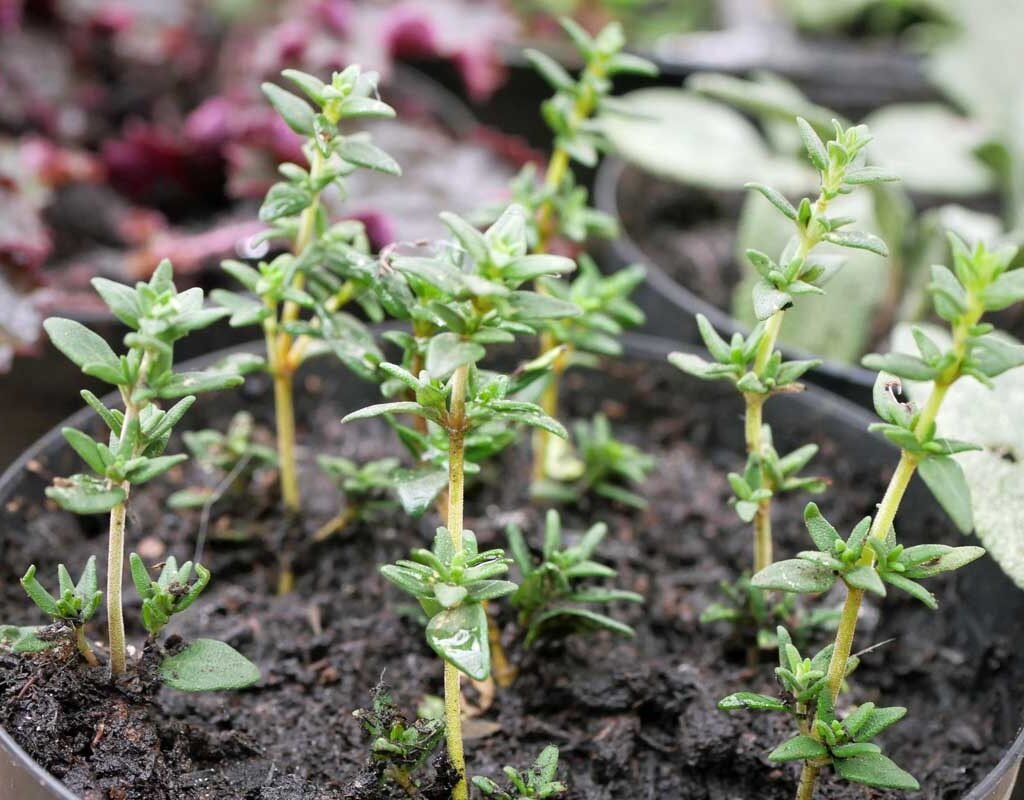
Thyme’s earthy, aromatic flavor enhances a wide range of dishes—from meats and vegetables to soups and sauces. It’s a cornerstone herb in French, Italian, and American Southern cooking.
Classic Uses
- Roasted Meats: Perfect with chicken, beef, pork, or lamb.
- Soups and Stews: Adds depth to hearty dishes like chicken noodle soup or beef stew.
- Vegetables: Pairs beautifully with roasted potatoes, carrots, and green beans.
- Seafood: Lemon thyme is ideal for grilled salmon or shrimp.
- Bread and Butter: Mix chopped thyme with butter or add it to homemade focaccia.
Pro Tip:
Thyme releases its flavor slowly, so add it early during cooking for rich, savory results.
6. Health Benefits of Thyme
Thyme isn’t just flavorful—it’s packed with nutrients and medicinal properties that support overall wellness.
- Rich in Antioxidants: Contains thymol and carvacrol, which fight oxidative stress.
- Boosts Immunity: High in vitamin C and vitamin A.
- Supports Respiratory Health: Traditionally used to ease coughs, colds, and bronchitis.
- Promotes Digestion: Helps alleviate bloating and indigestion.
- Natural Antimicrobial: Thyme oil is known to combat bacteria and fungi.
Many Americans use thyme tea as a soothing home remedy for sore throats and coughs—especially during winter months.
7. Thyme in American Home Décor and Landscaping
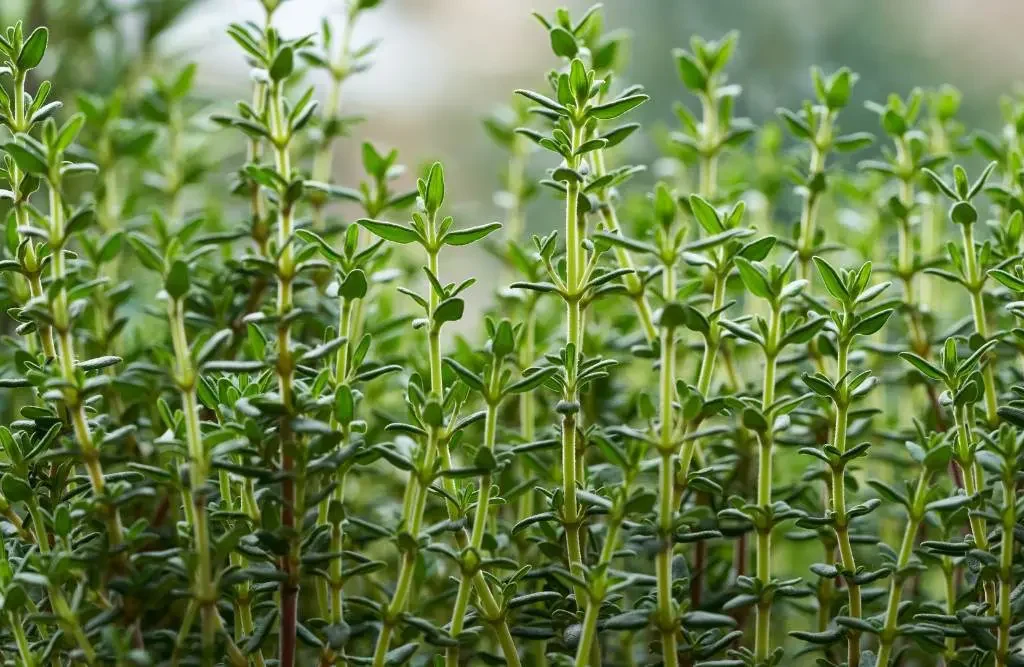
Beyond the kitchen, thyme’s compact growth and tiny flowers make it a beautiful addition to gardens and patios.
- Creeping Thyme as Ground Cover: Fills gaps between stepping stones or in rock gardens.
- Container Gardens: Grows well in pots on sunny windowsills or balconies.
- Pollinator-Friendly: Attracts bees and butterflies, supporting local ecosystems.
Its fragrant foliage and drought resistance make it ideal for sustainable, low-maintenance landscaping—a growing trend in American yards.
8. Fun Ways to Use Thyme at Home
Get creative with thyme beyond cooking:
- Herbal Infused Oils: Combine thyme with olive oil for drizzling over salads or bread.
- Homemade Seasoning Blends: Mix with rosemary, oregano, and sage for a DIY herb mix.
- Herbal Bath: Add thyme sprigs to hot water for a relaxing, aromatic soak.
- Natural Air Freshener: Boil thyme and lemon slices to freshen up your kitchen.
9. Troubleshooting Common Thyme Problems
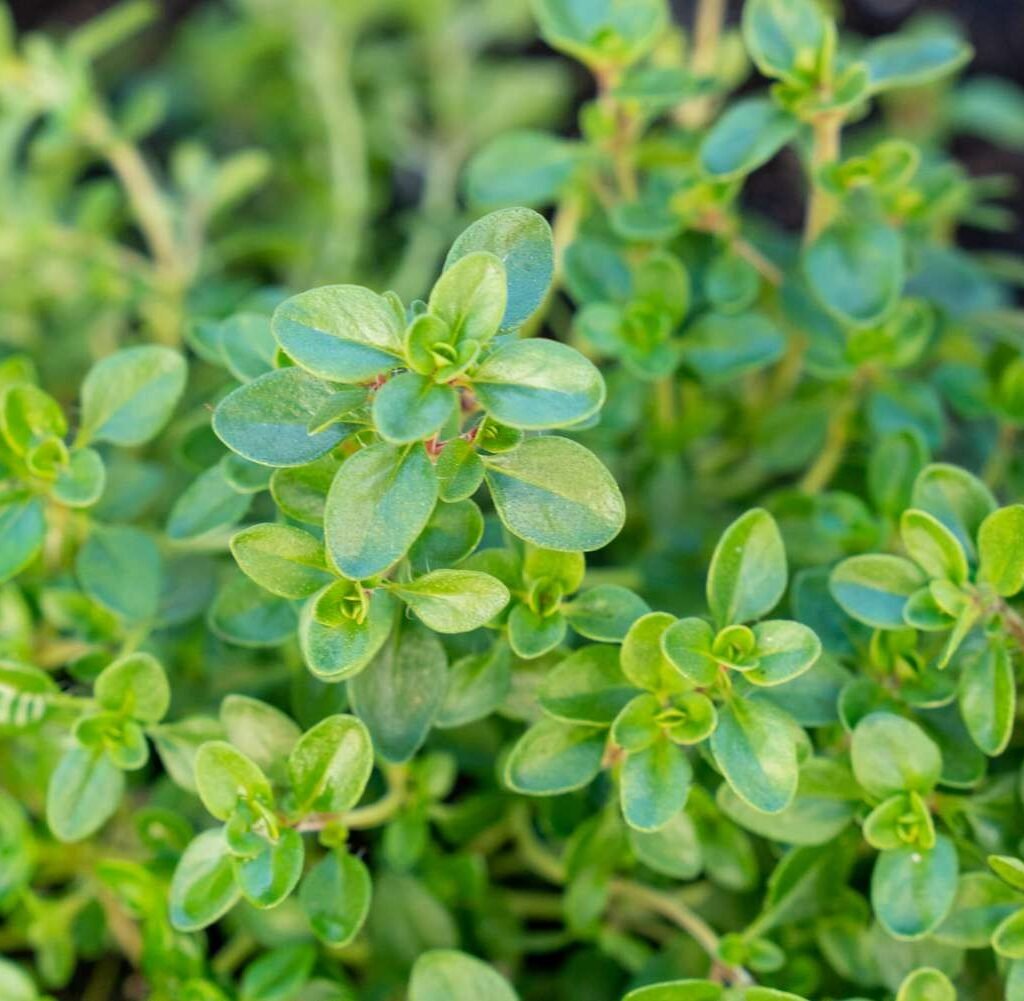
While thyme is hardy, it can face a few common issues:
- Root Rot: Caused by overwatering—ensure proper drainage.
- Powdery Mildew: Improve air circulation and avoid overhead watering.
- Leggy Growth: Regular pruning encourages bushiness.
Healthy thyme plants can thrive for several years with minimal care, rewarding you with beauty and flavor season after season.
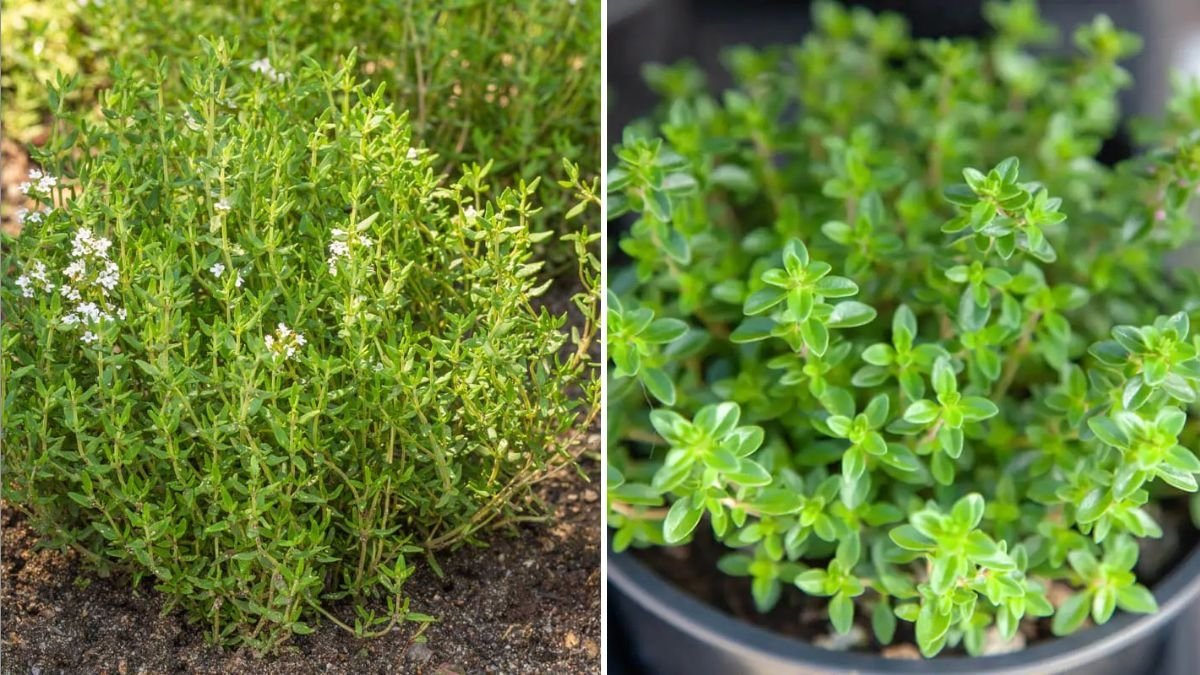





Leave A Comment